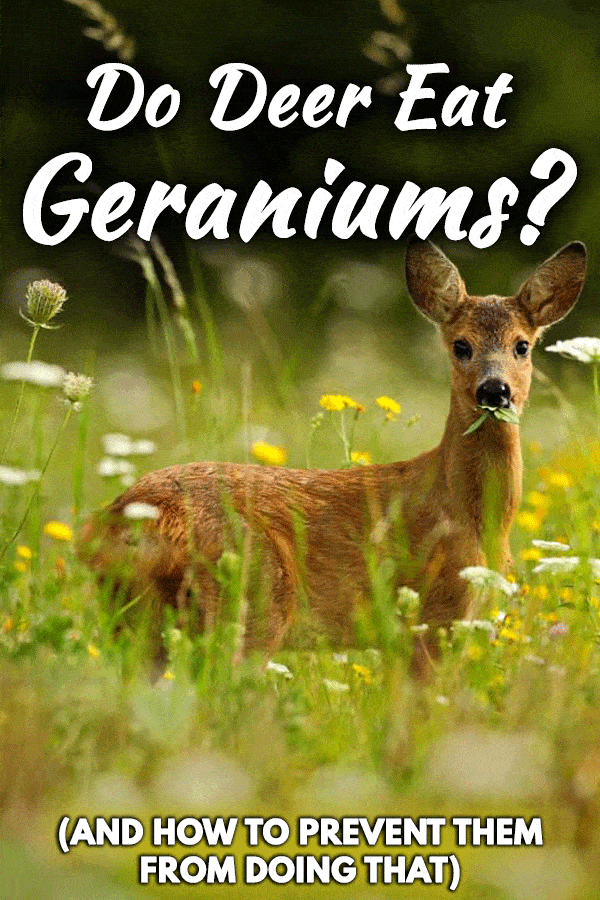After lovingly and carefully cultivating a garden with geraniums, the last thing you want to deal with is a deer invasion undoing all of your work. Deer are opportunistic mammals that will munch on grass, shrubs and nearly any type of flora that they come across. If you’re worried about deer encroaching on your flower beds and you want to know how to prevent this from happening to you, continue reading.
Geraniums are not a deer’s flower of choice, but they will eat them under a number of circumstances. The strong fragrance and slightly fuzzy texture will typically deter deer, but not always. If food is scarce or the geraniums are surrounded by plant life that deer find quite appealing, your geraniums can become a menu item. You can discourage this from happening by using a number of methods.
In this brief guide to deer and geraniums, I will teach you how to effectively save your geraniums from destruction. You’ll also learn what other pests like to dine on these flowers and how you can drive them away before all of your hard work is chewed up.

How to Keep Deer from Eating Geraniums
There is no deer repellent method that is 100% guaranteed to work, but there are quite a few things that you can try. These techniques can be combined with one another to increase the security of your flower beds.
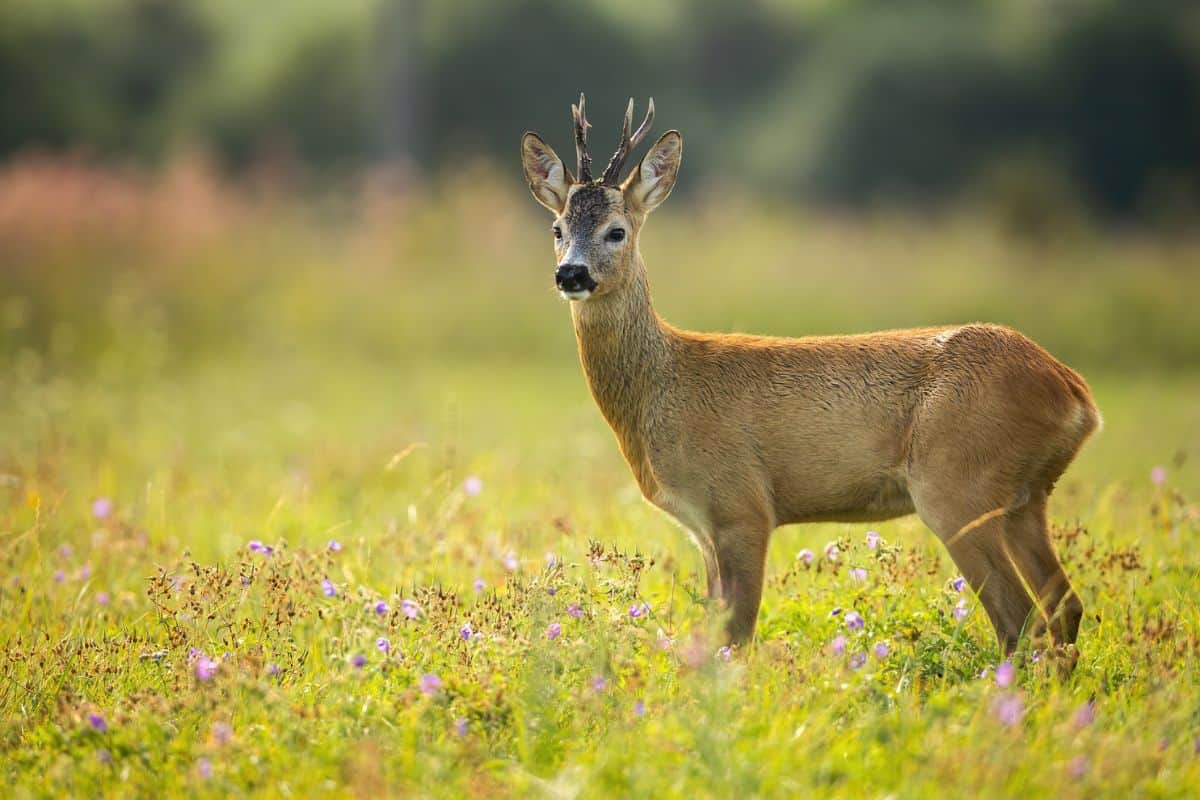
Protect Your Geraniums with Other Plants
There are many different plants that you can introduce to your garden to diminish a deer’s interest in your geraniums. Harnessing the effectiveness of these plants is widely preferred over view-obstructing fences and adds some eye-catching variety to a landscape. Some plants are toxic to deer (daffodil, foxglove), some offer a texture that they don’t like (lamb’s ear) and others produce such strong scents that deer are more inclined to stay away (sage, basil, mint, lavender).
Incorporate these plants into your garden to protect your geraniums and other wanted plant life.
Make Your Yard Less Appealing
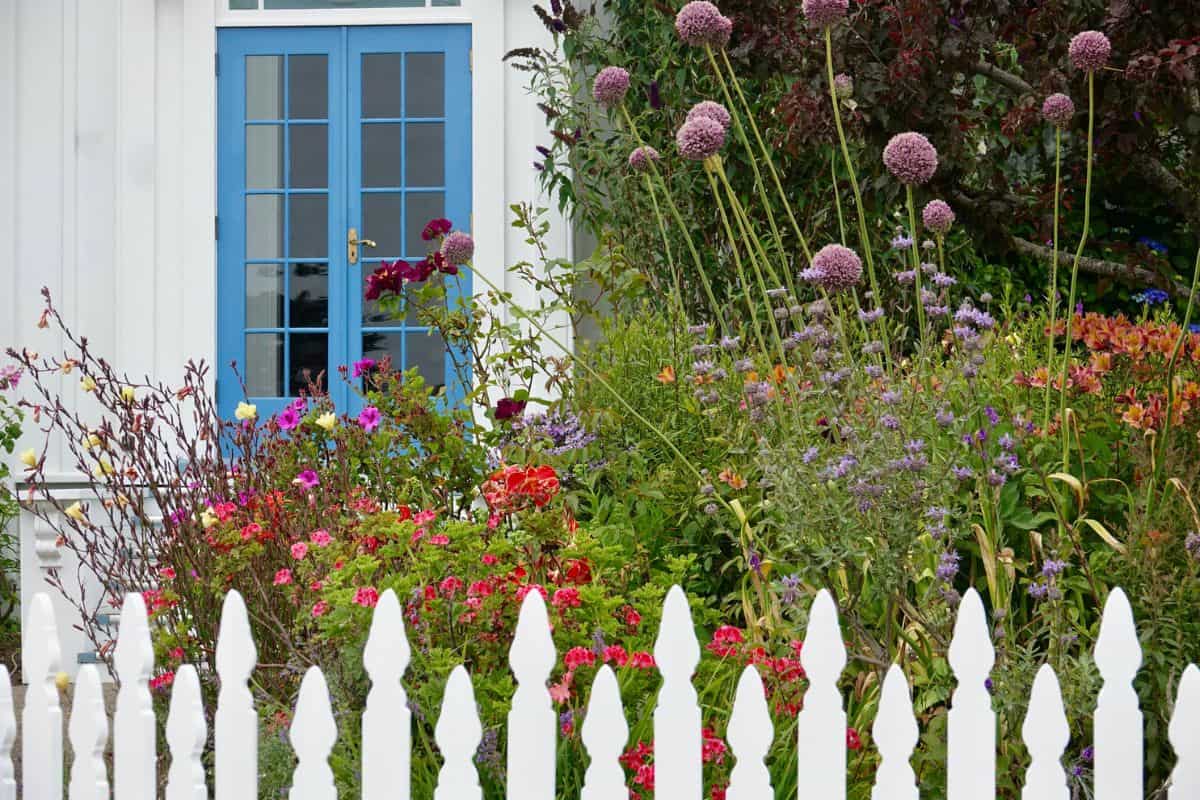
If a deer feels that they are not safe in an area, they will move on. You don’t have to pose them any risk of actual harm, merely the impression of it.
Set up a motion-activated sprinkler that will give wandering deer a spritz.
Make sure that your dog (if you have one) spends a lot of time in or around the garden. You can even take some of their fur and lay it around the area, reminding the deer of the dog’s presence.
Change up the landscape, if you feel inclined to make a big change. Adding levels, steps, slopes and other variances in the terrain will make your yard harder to traverse. If the deer doesn’t care for your yard, they’re not going to get near your geraniums.
If you grow fruits or veggies on your property, make sure to harvest them as soon as they can be harvested. If left out too long, a deer could perceive this as an all-you-can-eat buffet. And once the deer have decided that your yard is the place to be, your geraniums could very well be next.
Install a Fence
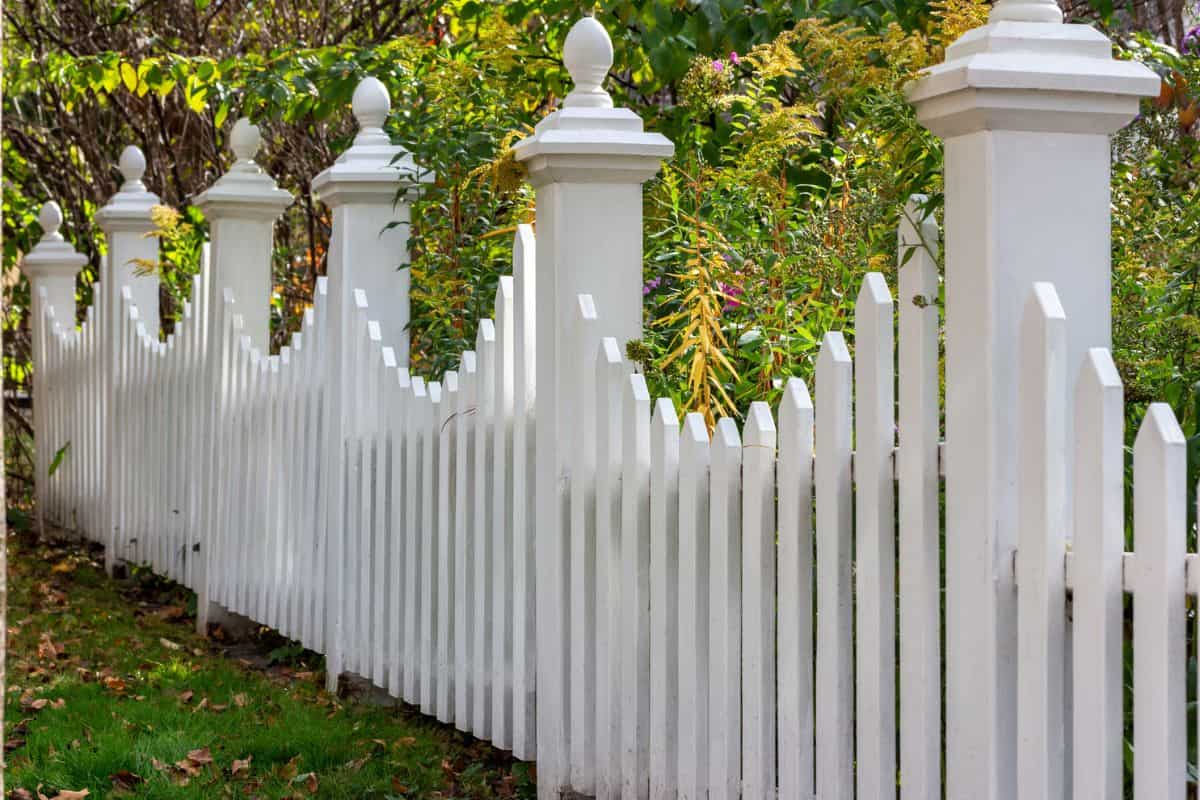
Fencing isn’t ideal for everybody. The cost and appearance of fencing can be perceived as a detriment, but it is one of the most effective ways of warding off deer. The most popular type of fencing, which you have likely seen, is wire-mesh fencing. These deer fences are made of metal and sometimes polypropylene. Mesh made of polypropylene is nearly invisible, which eliminates the aesthetics issues that some people don’t appreciate where fencing is concerned.
Electric fencing is also a popular solution for those who don’t want an eyesore of a fence in their yard. Essentially, these fences use bait to lure deer to posts. Once engaged, these posts then deliver a very small – but surprising – electric shock to the deer. This is less of a barrier and more of a behavior modifier. A deer can quickly be taught to avoid your yard this way, but electric fencing is not regarded as effective as a physical barrier fence.
If you’ve been considering adding a fence to enclose your yard, a wooden privacy fence or chain link fencing can serve toward this purpose.
Another option is to place your geraniums high up where deer are less likely to get them. Read here about geraniums in hanging baskets.
Make or Buy a Repellent
There are many types of repellent available on the market, ranging from 99 cent bars of soap to specialized, synthetic commercial products. Here are a couple of options from Amazon -
Click to see the Deer Out deer repellent on Amazon
Click here to see the Bobbex deer repellent on Amazon
To find what works best for you, you should experiment. Make use of natural, plant-safe and pet-safe products whenever possible to avoid the possibility of accidental harm coming to any living thing.
Deer rapidly become adapted to the use of repellents, so what worked for your flowerbeds one year might not work in the next year. Rotate the use of repellents when you can to avoid this problem and having a surprise dinner guest in your yard.
DIY Deer Repellent Recipe
One thing that you can do, which many geraniums and other flower owners have done before you, is to make your own repellent mixture. It is surprisingly easy and if the popularity of this method says anything at all, quite effective. Here’s a quick step-by-step to making this mixture.
- Crack two eggs into a bowl that’s filled with 2 cups of water.
- Blend the eggs and the water at a high speed with an eggbeater or similar appliance.
- Add the mixture into a gallon of water.
- Let the mixture sit for 24 full hours.
- Apply the repellent to the area surrounding your flowers.
- Repeat as you decide is necessary.
Some gardeners recommend adding hot sauce or minced garlic to the mix as well.
What Other Pests Eat Geraniums and How Can I Stop Them?
Deer can certainly wreak havoc on a flowerbed, but they are not the most prominent pest that dines on geraniums. You’re much more likely to come face-to-face with the geranium budworm, a pervasive caterpillar that eats geraniums from the inside-out.
Fortunately, geraniums are quite pest resistant. Even deer aren’t that fond of them, so you’re not very likely to find squirrels and other mammalian pests dining on your flowers. But that doesn’t mean that you have nothing to worry about. Geraniums are often affected by aphids, mites and most notably the geranium budworm.
Geranium Budworm
The geranium budworm (also known as the tobacco budworm) is the caterpillar stage of a moth that frequently appears on geraniums in warm climates. They feast on developing flowers, leaving them with a ragged “nibbled on” appearance. Even after moving on, budworms will leave behind excrement that does no favors for your garden and only makes it look shabbier.
How to Treat Your Garden for Geranium Budworms
If you have geraniums in your flower beds, you should know how to deal with these pests if they make an appearance. Treating geraniums with chemical treatments is often ineffective due to the fact that budworms feast on the inside of the buds.
Inspect the Plants
You should inspect your geraniums regularly for signs of an infestation. Of course, you will want to look for the budworms themselves. Budworms:
- Are yellow or green in color, depending on their age.
- Have a brown head.
- Are 1/25’’ to 1 ½’’ long, again depending on age.
- Are covered in black microspines.
Remove the pests
If you see these pests on your flowers, pluck off the ones that you can and drop them into a bucket full of soapy water. During this time, you might see small, greyish-colored eggs.
Check for holes in the buds
Now, conduct a second visual inspection of your geraniums. Look for holes in the buds. These holes are indicative of the budworms having wormed their way into the interior of each plant. If you see any affected buds, cut them off the plant and discard them right away.
Treat your plants
Once you have cleared away as many budworms, damaged buds, and budworm eggs as you can, it’s time to treat your geraniums! Use a pesticide containing Bacillus thuringiensis, a bacterial component that kills caterpillars of nearly any variety. Squirt the plants thoroughly. When the worms bite into the bacteria, they won’t be alive long enough to issue any additional bites.
Other Pest Prevention Tips to Save Your Geraniums
- Introduce ladybugs to your garden. They will dine on aphids, which are another common problem in geranium beds.
- Spray your plants with insecticidal soap. If used once every couple of days, this is effective against whiteflies.
- Use a horticultural oil at the first sign of an infestation.
- If you use horticultural oil, like neem oil, only do so in the evening. These oils can break down in the heat of a midday sun.
Don’t Let Deer Help Themselves to Your Geraniums
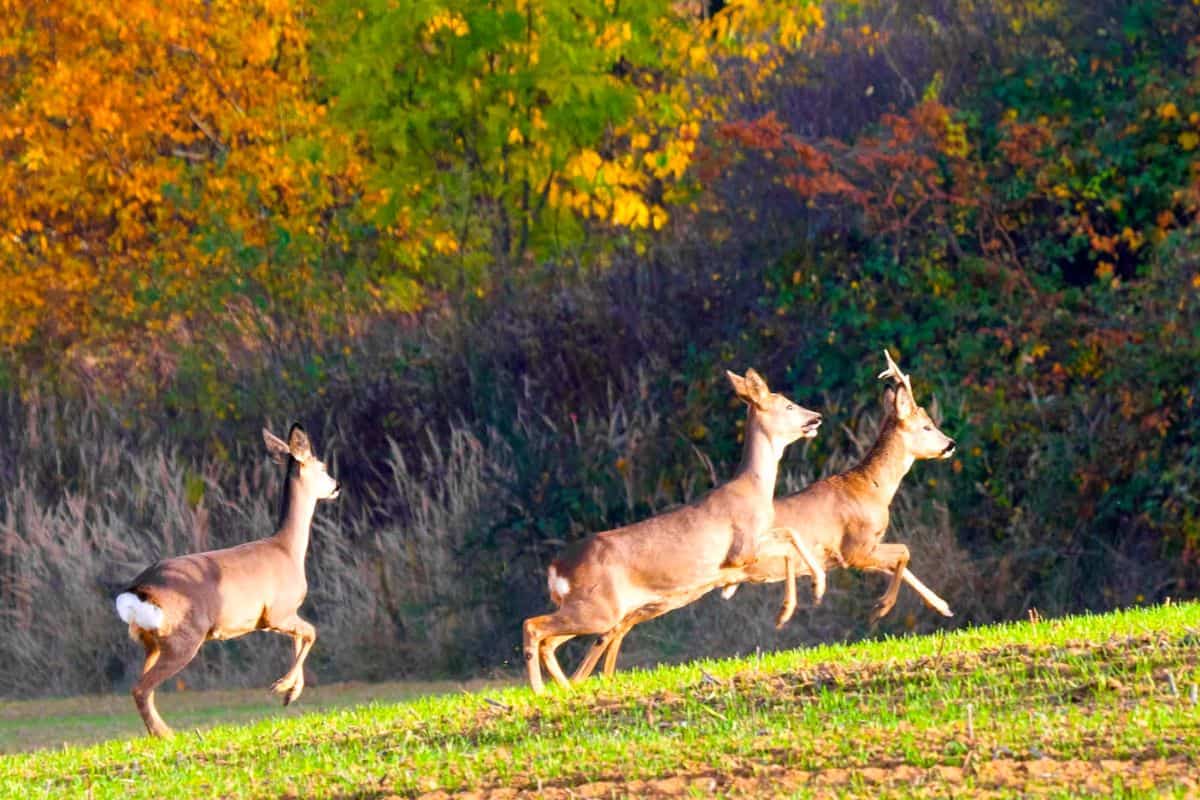
Deer aren’t the number one culprit behind geranium destruction, but you should still keep an eye out for them if they show up in your garden. Deer are picky eaters, but if food appears to be scarce then they will eat geraniums – and a lot of them, too. Fortunately, you have a wide assortment of options to keep these majestic, beautiful pests at bay.
Repellents, fences, unappetizing plant life in your yard, sprinkler systems, and specific landscaping practices are all ways to combat an unwanted deer presence feasting on your flowers. If you combine two or more of these methods in tandem, you enhance your safeguarding against deer substantially. This is worth considering if you live in an area with a high deer population.
Getting deer away from your garden is not only good for your garden but good for the people who live around you. Deer cause a tremendous number of auto accidents each year, so that’s another upside to consider when you actively work against deer encroaching on your flowerbeds. If they can’t get to your flowers, they’ll go somewhere else – hopefully, somewhere they won’t cause much grief.
Know how to plant, and care for these beautiful flowers, read How to Grow Geraniums. And if you're only starting out, you should definitely check out our list of online stores where you can buy geranium seeds.
